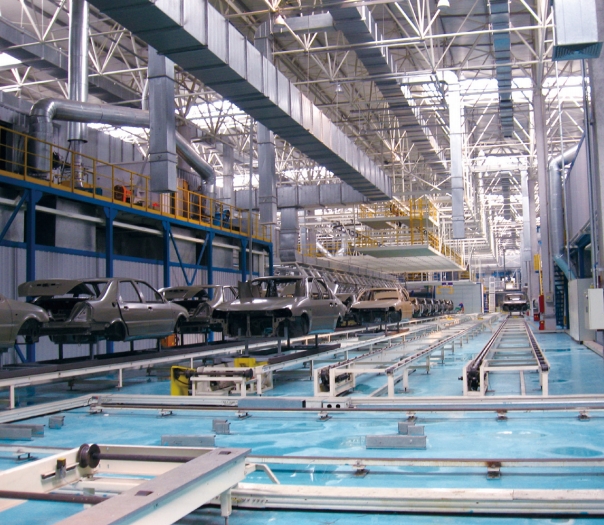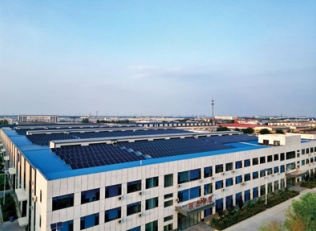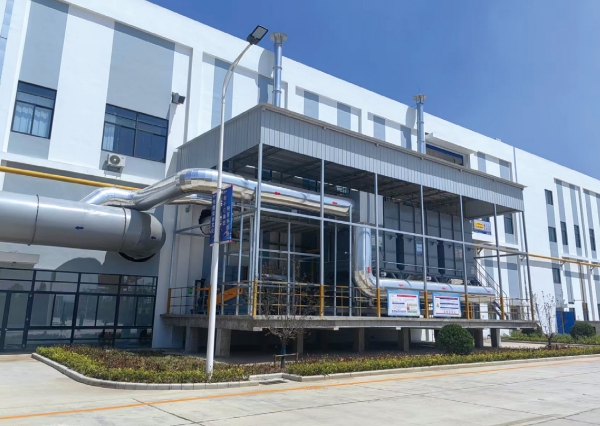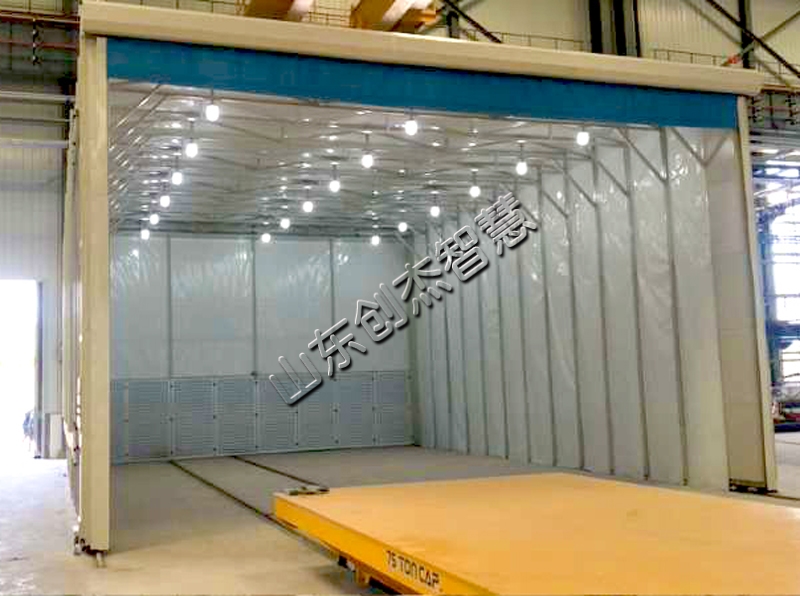VOCs 廢氣治理的八大核心工藝解析?
VOCs 廢氣作為工業生產與日常活動中常見的污染物,其治理需根據廢氣濃度、成分及排放要求選擇適配工藝。以下八大核心處理工藝各有側重,覆蓋了從低濃度到高濃度、從簡單成分到復雜混合物的治理需求。
VOCs waste gas, as a common pollutant in industrial production and daily activities, needs to be treated by selecting appropriate processes based on the concentration, composition, and emission requirements of the waste gas. The following eight core processing techniques each have their own focus, covering the treatment needs from low concentration to high concentration, from simple components to complex mixtures.
吸附法是應用最廣泛的基礎工藝,利用活性炭、分子篩等吸附劑的多孔結構,將 VOCs 分子截留于孔隙中。該工藝適用于低濃度、大風量廢氣,如印刷車間排放的溶劑蒸氣,通過吸附劑吸附后可使廢氣達標排放。吸附劑飽和后需進行脫附再生(如熱空氣脫附、蒸汽脫附),再生后的 VOCs 可回收利用或焚燒處理,兼具環保與資源回收價值。
Adsorption method is the most widely used basic process, which utilizes the porous structure of adsorbents such as activated carbon and molecular sieves to trap VOCs molecules in the pores. This process is suitable for low concentration, high air volume exhaust gases, such as solvent vapors emitted from printing workshops. After adsorption by adsorbents, the exhaust gases can meet the emission standards. After the adsorbent is saturated, it needs to undergo desorption regeneration (such as hot air desorption, steam desorption). The regenerated VOCs can be recycled or incinerated, which has both environmental protection and resource recovery value.
催化燃燒法通過催化劑降低 VOCs 的燃燒溫度,使有機物質在 200-400℃下氧化分解為 CO和 HO。相比直接燃燒,其能耗更低,適合中低濃度廢氣(濃度 1000-10000mg/m3),如涂裝行業的噴漆廢氣。催化劑多采用貴金屬(鉑、鈀)或非貴金屬(銅、錳氧化物),需避免廢氣中的硫、氯等成分中毒失活,因此常配合預處理工藝去除雜質。
Catalytic combustion method reduces the combustion temperature of VOCs through catalysts, allowing organic matter to oxidize and decompose into CO and HO at 200-400 ℃. Compared to direct combustion, it has lower energy consumption and is suitable for low to medium concentration exhaust gases (concentrations of 1000-10000mg/m3), such as paint exhaust gases in the painting industry. Catalysts often use precious metals (platinum, palladium) or non precious metals (copper, manganese oxides) to avoid poisoning and deactivation of sulfur, chlorine, and other components in exhaust gas. Therefore, pre-treatment processes are often used to remove impurities.
蓄熱式燃燒法(RTO) 依靠高溫(800-1000℃)將 VOCs 徹底氧化,同時通過蓄熱體回收燃燒熱量,熱效率可達 90% 以上。該工藝適用于高濃度廢氣(濃度>5000mg/m3),如化工反應釜排放的有機廢氣,即使廢氣成分復雜也能穩定處理。其核心是蜂窩狀陶瓷蓄熱體,通過交替切換氣流方向實現熱量循環,大幅降低運行能耗。
The regenerative combustion method (RTO) relies on high temperature (800-1000 ℃) to thoroughly oxidize VOCs, while recovering combustion heat through a thermal storage body, with a thermal efficiency of over 90%. This process is suitable for high concentration waste gas (concentration>5000mg/m3), such as organic waste gas emitted from chemical reaction vessels, and can be stably treated even if the composition of the waste gas is complex. Its core is a honeycomb shaped ceramic thermal storage body, which achieves heat circulation by alternately switching the airflow direction, significantly reducing operating energy consumption.
吸收法利用 VOCs 在吸收劑中的溶解度差異實現分離,分為物理吸收(如柴油吸收苯系物)和化學吸收(如堿液吸收有機酸)。該工藝適合處理水溶性或易反應的 VOCs,如制藥行業的含醇廢氣,吸收后的富液可通過蒸餾解析回收溶劑,吸收劑循環使用。需注意吸收劑的選擇,避免二次污染且確保吸收效率穩定。
The absorption method utilizes the difference in solubility of VOCs in absorbents to achieve separation, which is divided into physical absorption (such as diesel absorption of benzene derivatives) and chemical absorption (such as alkaline absorption of organic acids). This process is suitable for treating water-soluble or easily reactive VOCs, such as alcohol containing waste gas in the pharmaceutical industry. The absorbed rich solution can be recovered by distillation and solvent recovery, and the absorbent can be recycled. Attention should be paid to the selection of absorbents to avoid secondary pollution and ensure stable absorption efficiency.

冷凝法通過降溫使 VOCs 從氣態冷凝為液態,適合高濃度、高沸點 VOCs(如油氣回收中的汽油蒸氣),常作為預處理工藝與其他方法聯用。冷凝溫度越低,回收效率越高,可配合冷凍機組將溫度降至 - 30℃至 - 100℃。回收的液態 VOCs 可直接回用,適合溶劑型企業實現資源循環,但對低沸點物質處理效率有限。
The condensation method condenses VOCs from a gaseous state to a liquid state through cooling, which is suitable for high concentration, high boiling point VOCs (such as gasoline vapor in oil and gas recovery), and is often used in combination with other methods as a pretreatment process. The lower the condensation temperature, the higher the recovery efficiency. It can be combined with a refrigeration unit to lower the temperature to -30 ℃ to -100 ℃. The recycled liquid VOCs can be directly reused, which is suitable for solvent based enterprises to achieve resource recycling, but the efficiency of treating low boiling point substances is limited.
生物處理法利用微生物代謝作用分解 VOCs,將其轉化為無害的生物質和 CO。該工藝包括生物濾池、生物滴濾等形式,適合低濃度(<1000mg/m3)、易生物降解的 VOCs,如食品加工行業的發酵廢氣。優勢是運行成本低、無二次污染,但受溫度、濕度影響較大,對難降解物質(如苯、甲苯)處理效率較低。
The biological treatment method utilizes microbial metabolism to decompose VOCs and convert them into harmless biomass and CO. This process includes forms such as biofilters and biofilters, and is suitable for low concentration (<1000mg/m3) and easily biodegradable VOCs, such as fermentation waste gas in the food processing industry. The advantages are low operating costs and no secondary pollution, but it is greatly affected by temperature and humidity, resulting in lower efficiency in treating difficult to degrade substances such as benzene and toluene.
等離子體法通過高壓電場產生高能電子,破壞 VOCs 分子結構使其分解。適用于低濃度、多組分廢氣,如電子行業的光刻廢氣,處理過程快速且設備占地面積小。但需注意避免產生 NOx 等二次污染物,且對高濃度廢氣處理能耗較高,通常作為輔助工藝使用。
The plasma method generates high-energy electrons through a high-voltage electric field, which breaks down the molecular structure of VOCs and decomposes them. Suitable for low concentration, multi-component exhaust gases, such as lithography exhaust gases in the electronics industry, with fast processing and small equipment footprint. However, attention should be paid to avoiding the generation of secondary pollutants such as NOx, and high energy consumption is required for the treatment of high concentration exhaust gas, which is usually used as an auxiliary process.
光催化氧化法借助紫外線激發 TiO等光催化劑,產生羥基自由基氧化分解 VOCs。適合低濃度、惡臭類廢氣(如污水處理廠的臭氣),設備簡單易維護,但受光照強度、催化劑活性影響,處理效率易波動,需定期更換催化劑以保證效果。
The photocatalytic oxidation method utilizes ultraviolet light to excite photocatalysts such as TiO, generating hydroxyl radicals to oxidize and decompose VOCs. Suitable for low concentration and odorous exhaust gases (such as the odor from sewage treatment plants), the equipment is simple and easy to maintain, but the treatment efficiency is easily affected by light intensity and catalyst activity, and the catalyst needs to be replaced regularly to ensure effectiveness.
VOCs 廢氣治理需遵循 “分質施策” 原則,八大工藝各有適用場景:高濃度廢氣優先選擇蓄熱燃燒或冷凝回收,中低濃度廢氣可采用催化燃燒或吸附法,復雜成分廢氣常采用 “預處理 + 主工藝” 的組合方案。合理選擇工藝不僅能實現達標排放,更能兼顧能耗與資源回收,推動廢氣治理從 “末端控制” 向 “綜合利用” 升級。
The treatment of VOCs waste gas should follow the principle of "targeted treatment based on quality", and each of the eight processes has its own applicable scenarios: high concentration waste gas should be prioritized for thermal storage combustion or condensation recovery, medium and low concentration waste gas can be treated using catalytic combustion or adsorption methods, and complex component waste gas often adopts a combination of "pretreatment+main process". Reasonable selection of processes can not only achieve standard emissions, but also balance energy consumption and resource recovery, promoting the upgrading of waste gas treatment from "end of pipe control" to "comprehensive utilization".
本文由VOCs廢氣處理友情奉獻.更多有關的知識請點擊:http://www.qzxcdz.com我們將會對您提出的疑問進行詳細的解答,歡迎您登錄網站留言.
This article is dedicated to the automatic shot blasting machine and friendship For more information, please click: http://www.qzxcdz.com We will provide detailed answers to your questions. You are welcome to log in to our website and leave a message
















 魯公網安備 37142502000144號
魯公網安備 37142502000144號